 |
 |
 |
| |
CABOTEGRAVIR PPK SIMULATION TO INFORM Q2M
STRATEGIES FOLLOWING DOSING INTERRUPTIONS
|
| |
| |
CROI 2021 March 6 Reported by Jules Levin
Kelong Han1, Mark Baker2, William R. Spreen3, Susan L. Ford4 1GlaxoSmithKline, Collegeville, PA, USA, 2ViiV Healthcare, Nyon, Switzerland, 3ViiV Healthcare, Research Triangle Park, NC, USA, 4GlaxoSmithKline, Research Triangle Park, NC, USA
Background: Cabotegravir (CAB) is an integrase strand transfer inhibitor formulated as long-acting (LA) injection for treatment and prevention of HIV, and as tablet for oral lead-in and bridging therapy for LA dose interruptions. CAB LA administered with rilpivirine (RPV) LA is a 2-drug regimen for HIV treatment with proven efficacy following LA injections monthly and every 2 months (Q2M). Population pharmacokinetic (PPK) modeling and simulation was performed to inform strategies for managing dosing interruptions of the Q2M regimen. RPV simulations are presented separately.
Methods: The CAB PPK model described data following oral and LA administration adequately. Simulations of 500 virtual subjects (female:male=1:1) were performed using covariate sampling with replacement from the PPK dataset. One- to 12-week delays in dosing of the 2nd, 3rd, and 4th injection were simulated. Oral bridging simulations were performed with oral dosing starting at the time of the missed injection for a duration of 1-3 months when CAB LA dosing was resumed. Results were compared to simulated uninterrupted profiles wherein 95% of subjects maintain concentrations above 0.65 μg/mL (benchmark in Phase 3 HIV treatment studies).
Results: The proportion of subjects above benchmark was predicted to fall temporarily to as low as 92.8% (<95% for ≤1 week) following a 1-week delay, 90% following a 2-week delay, and 10% with a 12-week delay (Table). Delays of >4 weeks have a greater impact on the 2nd injection than later injections. Oral bridging with CAB 30mg once daily starting at the time of a planned missed injection is predicted to provide exposures within ranges observed in Phase 3 studies.
Conclusion: Adherence to Q2M schedule is strongly recommended. When the 2nd, 3rd, or 4th injection is delayed, dosing delays of up to 1 week were predicted to have minimal impact, but longer delays may have a greater impact, particularly for the 2nd injection. Oral bridging provides therapeutic and safe exposures for planned interruptions in IM dosing. Regardless of oral bridging, simulations support: If injection is delayed by ≤1 month (≤2 months between the 1st and 2nd injections or ≤3 months between subsequent injections): resume 3 mL injections Q2M as soon as possible; and if injection is delayed by >1 month (>2 months between the 1st and 2nd injections or >3 months between subsequent injections): reinitiate Q2M regimen with a 3 mL injection followed by 3 mL Q2M 1 month after the resumed injection.
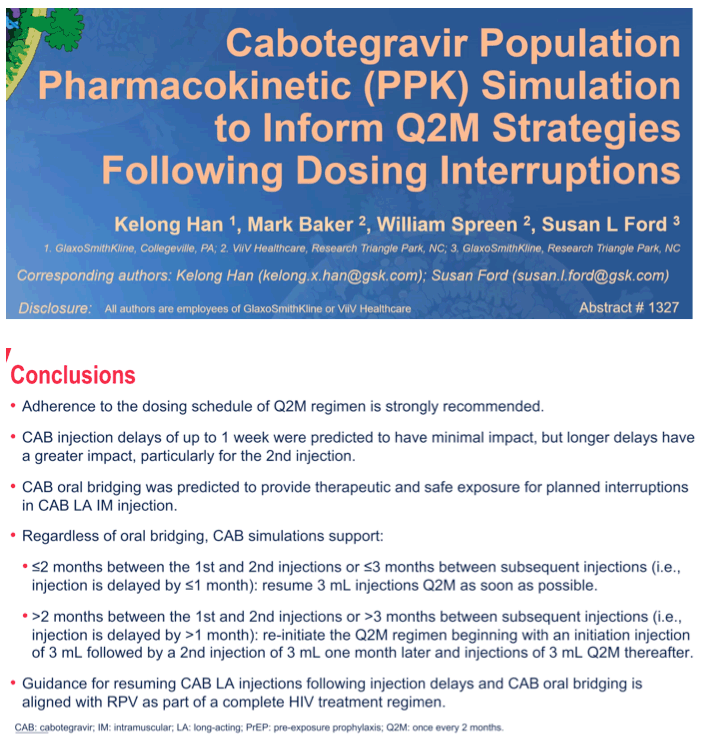
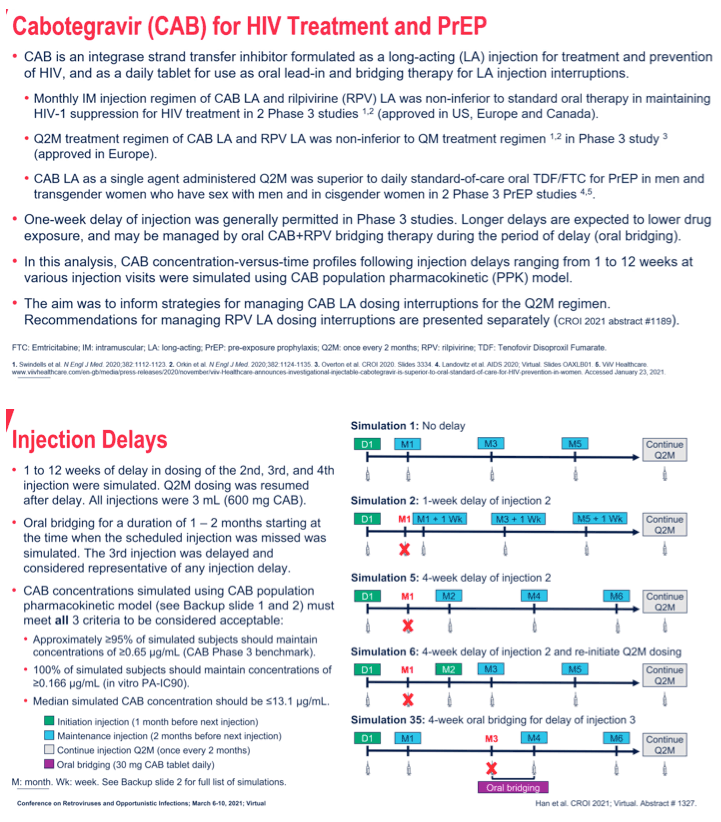
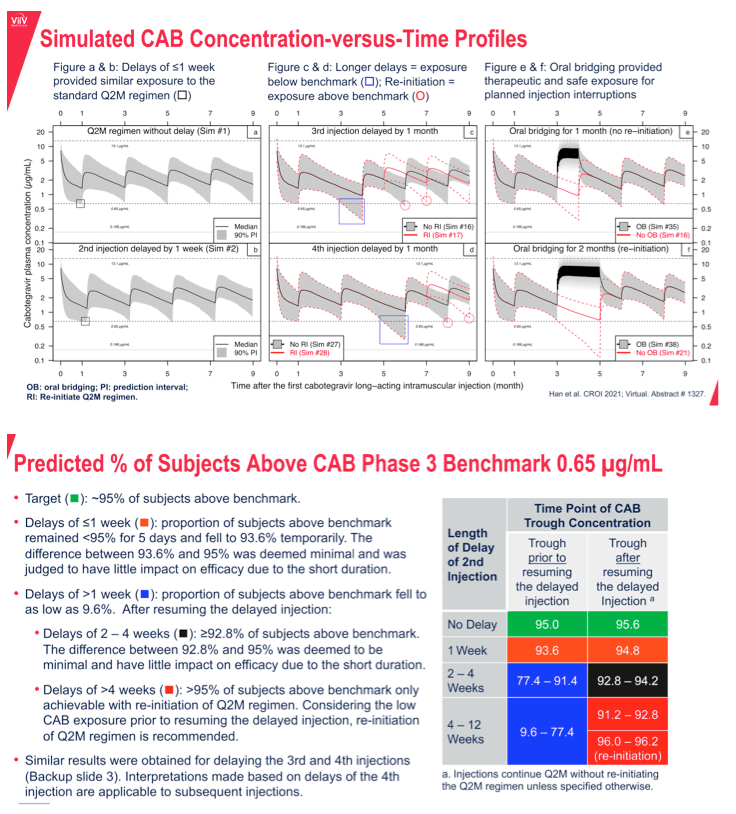
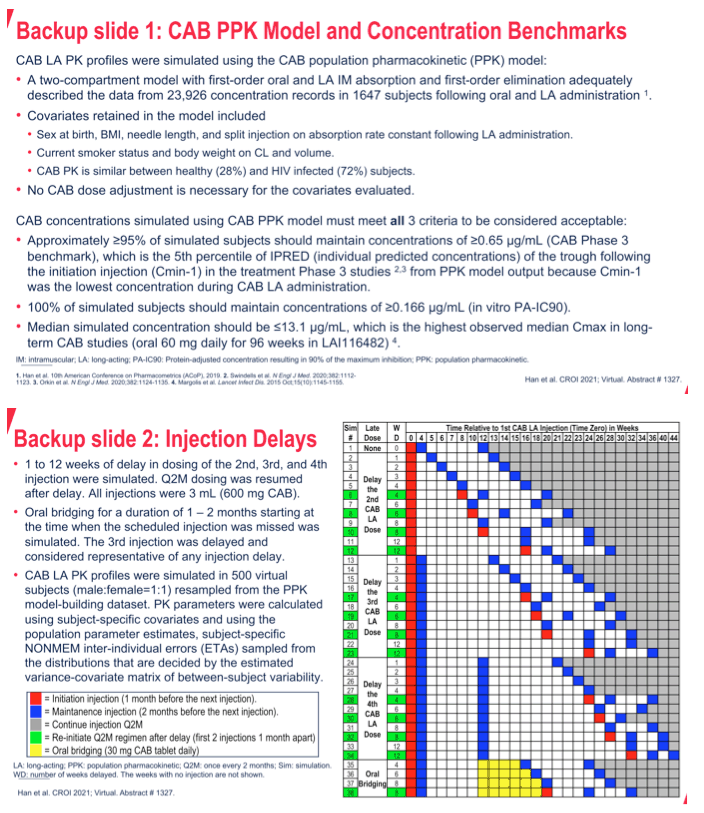
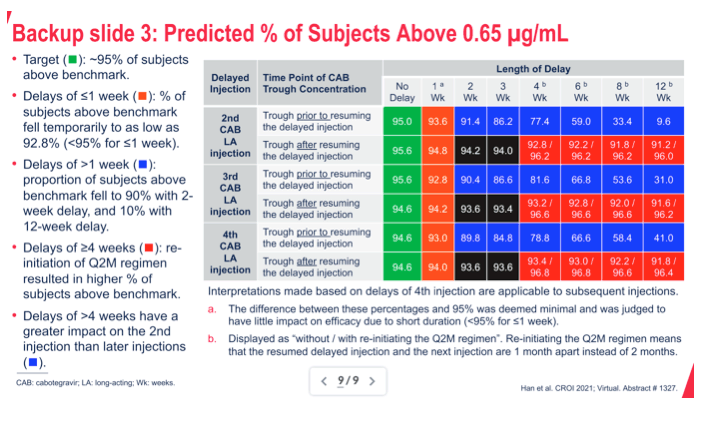
|
| |
|
 |
 |
|
|